________________

‘The recent Dorothy Project release Houses of Ravicka is now Gladman’s 13th book, and her fourth about her invented city of Ravicka. Her Ravicka novels are strange and obsessive and in many ways singular. But Gladman also follows in a robust literary tradition of surreal urban creation. In Italo Calvino’s Invisible Cities, Marco Polo describes over 50 fictitious cities to emperor Kublai Khan. In Julio Cortázar’s 62: A Model Kit, “The City” feels like Paris, Barcelona, or Oslo as it shifts around its characters. Samuel Delany’s 800-page novel Dhalgren is an extended trip through the Midwest city of Bellona, cut off from the rest of the world by some unknown catastrophe. With Ravicka, Gladman conjures a city in which everything is vivid and nothing is fixed. I often tell people Gladman’s Ravicka books are like The Phantom Tollbooth for adults.
‘In its exploration of language, space, and time, Gladman’s writing achieves an uncanny balance between evocative specifics and hazy uncertainties. The first Ravicka book, Event Factory, features a “linguist-traveler” studying the city and its speech. “Listening to [the Ravickians] was like gathering water without a pail,” the narrator says. “Water gathered around my feet. I tried to capture it with my mind. I asked Dar to hold some. But it was water.” In The Ravickians, the second book, Gladman writes, “The closer I get to the end of a sentence, the less certain I am of its beginning.” In the third book, Ana Patova Crosses a Bridge, the narrator says, “I could write pages and pages without disruption, but if I stopped to think, ‘What is this language and how is it that I know it,’ I could not progress.”’ — Los Angeles Review of Books
Renee Gladman’s Site
A visit with Renee Gladman
RENEE GLADMAN’S ‘HOUSES OF RAVICKA’
Language and Landscape: Renee Gladman by Zack Friedman
Buy ‘Houses of Ravicka’
 Renee Gladman Houses of Ravicka
Renee Gladman Houses of Ravicka
Dorothy, a Publishing Project
‘Since 2010 writer and artist Renee Gladman has placed fantastic and philosophical stories in the invented city-state of Ravicka, a Ruritanian everyplace with its own gestural language, poetic architecture, and inexplicable physics. As Ravicka has grown, so has Gladman’s project, spilling out from her fiction—Event Factory, The Ravickians, and Ana Patova Crosses a Bridge—into her nonfiction (Calamities) and even visual art (Prose Architectures).
‘The result is a project unlike any other in American letters today, a fictional world that spans not only multiple books but different genres, even different art forms.
‘In Houses of Ravicka, the city’s comptroller, author of Regulating the Book of Regulations, seems to have lost a house. It is not where it’s supposed to be, though an invisible house on the far side of town, which corresponds to the missing house, remains appropriately invisible. Inside the invisible house, a nameless Ravickian considers how she came to the life she is living, and investigates the deep history of Ravicka—that mysterious city-country born of Renee Gladman’s philosophical, funny, audacious, extraordinary imagination.’ — Dorothy, a publishing project
Excerpt
I live here, and have done so for at least a decade, and have furnished brightly this spacious top-floor flat of seven rooms, this wall-less, invisible flat, and in all that time, I’ve gotten up, made coffee, dressed, and walked out the door. To leave an invisible structure is just as difficult as returning to one. I’d like to try to explain what it’s like: first, how you leave, and then, how you return. Probably, before all that, I should describe the events that led to my occupying 32 Bravashbinder, events belonging to an even larger system of events and weather that are so in situ it’s hard to gather them. But I do know that if I’m to tell a story about how I live, I’m also to tell about work and sex and how the city breathes, and this requires me to back all the way up to the Barbaras Wall, which long ago used to divide the upper and lower parts of the city on the east side, or back even further up to the emergence of the old city, unfolding, literally, beneath this one — born both of it and before it — and the new laws of motion it introduced into the science of the land (something always changing beneath you changes your chemistry, historians now say). No, perhaps I should begin by saying what it means to see or how measurements occur in time, because first you have to let go of the notion that sights enter the eyes, or merely the eyes. I like to travel far out of the city center, stand in some improbable place, and describe the things obstructed from my view. I try to see them even though they are behind me or are blocked by the buildings of ciut centali, cast in shadows by the trees atop cit Ramtala. You see something by calling its name and doing a pondü with the body. I go to the dirtiest part of the city, the old dilapidated docks, and I dream of the hafshahs; I see the grasses and tij. I stand against the north-side wall of the National Library and press my face into the grooved concrete of its facade and I write a letter about what people are reading inside. I send the letter to the building and try to erase it from my mind: I don’t read, I try to tell myself. Books don’t exist. I’m lying in the woods that run along the a5 with my face against the moist ground, reading the last book. Some hum extends from the city, and the walls of every home creak: a single electrical bend that divides time. Only a third of the residents bear a record of the break, only half of that third had actually heard it, only a third of that half of a third reflected on it, and just a few of these tired, still deeply dreaming souls, a sixteenth of the third of that half of a third, connect this minuscule eruption to those from previous nights and previous residences. I don’t see anything in the ground of the forest, but I hear pages turning in the book. The book, these creaks in the walls of houses, the hum of the city, the lines in the asphalt, have backed me up to the forest, my face against the ground. I was trying to tell you what it means to see a city that itself sees, that looks out of its structures toward some imagined place, some activating force. We have a whole science that says the buildings of Ravicka are on the move — the houses, the buildings — and although the science doesn’t say it’s because the houses see that they move, it’s clear that they move because they see. Otherwise, we wouldn’t be studying the migration of buildings but rather the behavior of some further exterior force. For example, if experts believed the migrations were due to wind or erosion, then we’d be looking more deeply at the properties of wind, the effects of erosion; and perhaps some group is studying one or the other of those things, because the Balsha winds are strong and erosion occurs wherever there is ground; but when it comes to what sets a house in motion, science seems to look primarily at the subjectivity of houses, not going so far as to say they have psychology but definitely allowing for instinct or bewilderment. Houses have creaked for a long time. Long before the first house got up and walked off, the walls of houses creaked, and not just in Ravicka. Nearly every ghostly tale has something that creaks. Wouldn’t it be logical to argue this as the first evidence of buildings seeing? As I said earlier, seeing does not extend foremost from the eyes. I get my face dirty in the forest, but I don’t come here when it rains. I don’t want any trouble with drowning or suffocating; I want to lie down and see what’s happening on my street. Understanding what’s happening in the houses that surround my house — noting the schedules people keep, which neighbors commingle, which keep to themselves, what books they read, whether or not they work, what the clocks on their walls say — helps me to define my own house, to give it shape, to know how to enter it today. To be clear, though, 32 Bravashbinder is not in motion. That is not one of its characteristics. It’s not off somewhere touring the city or the outskirts wreaking havoc on stationary structures; despite its invisibility, it is not a mystery. It doesn’t go on Brunza’s list; people are not talking about it behind closed doors. No. 32 bears the condition of many other houses in Ravicka; it exists on a degree nth parallel to some other house, usually on the opposite side of the city, and, for reasons laid out in The Book of Regulations — oblique to a layman like me — that other house relies on the invisibility of these houses in order to exist. But how do you know the place where you live is invisible, and how did you come to live there? It’s not only visitors from faraway countries who ask me these questions; some of my friends from the oldest families in Ravicka grow flustered when it comes to the question of Rah’s houses, many setting themselves up in the heavier homes (granite walls, deep foundations), hoping to stay grounded. However, I would argue: for any one house to be in motion every other house must be as well. It would be different were this open country, where miles separated one living structure from another; in that scenario, houses could do whatever they wanted — probably for centuries — before any other house knew about it. And that would be an entirely different science we’d be crafting, having no need to take propinquity into account. However, except for the forest, the grasses, and the outskirts, this is a densely built city; even bodies alter environments when they move through them. And for a long time, we seemed to understand how to read these changes. We knew how to adjust our thinking when we came upon a protest at the city’s center, a crowd of bodies standing in a U formation or bodies in a moving, furious cluster, pushing toward a gate or a door, a stage. There is a pareis for throngs; there’s a pareis for one body sprinting through the train station; a pareis for an excited family running up or down steps toward a park or carnival; a pareis for a couple in a fight, where one of the two storms away, or where they both storm away but in opposite directions; a pareis for when they make up and embrace and stay still for an hour (though stillness is another kind of movement; it affects the ground, even if not the wind). Most Ravickians are excited when the environment changes. The more awkward the situation one is observing, the more elaborate the response; but also, the more subtle its performance, the more public. Many people who seem to be in motion are most likely just in the middle of a response to something else. It’s hard to know: somehow the elders didn’t account for this. We exist in a society of complex gestures, all running along their own time; we are all interrupting, witnessing, performing simultaneously, and this was much easier to accept and discern when it was believed that all of our movement happened upon an unmoving ground, when it was believed that the ground itself was a dense impaction of dirt and sediment, when we didn’t think about the ground. Now as I move along the streets of Ravicka I think how odd it must have been to have this sort of geographic numbness I’m talking about, where your sense of the planet is on one hand a picture of a green and blue sphere rotating in a lonely vast darkness and on the other hand that indisputable flat, one-dimensional ground upon which we built our houses or took off in our planes. We have always acted as if we understood the space between the ground and sky, because this is primarily where we place our bodies, this was our living space, where we could most understand breath and language and light and contour. Someone at some point in our history said it was safe to walk across the ground, to walk without thinking about the ground; we were free to study the sky, to figure out how to build in empty space; birds were our mentors. We laughed at things that burrowed underground; we left them to the dark. Our understanding of space became implicit, complex, ornate, but always extending from the body, which began at our feet or at our crown and returned to the body. We would have sworn the environment was complete — not quite closed or sealed but unchanging enough that we all had access to the pattern: we shared memory, language; in the depths of our homes we shared our bodies; we touched our breasts to one another, we pulled our limbs through, we drank each other’s fluids. Living comprised all these movements, all these collectivities, and while it seemed to be transpiring on top of a silent, crystallized ground, among glued-down props, you could drop your books while you were running for the bus and I could jump back twice, then slowly forward in a somersault, and grab a leaf from a tree and a rock from my pocket (hand you the book you neglected to retrieve, the one under the tire of the parked car), and if we walked away from this scene without exchanging names or other means of contact, it would have seemed strange but not conspiratorial. I would have made a small notation later in my notebook, and that would have been the day. But the ground opened or lifted, and an ancient city began to carve itself beneath us, talking to our structures, setting them in motion — a city most of us can’t reach. I have never seen the door, which awaits the traveler many kilometers underground, nor have I found the vaunted gate at the bottom of the stairs inside Shadow of Courts Park. I have read about these portals in Amini novels; I’ve seen them drawn and mapped out and passed around at the Cartographer’s café, but I don’t know whether these stories and maps actually lead to the ancient city or whether they merely take one along the elaborate roads and sentences of fiction.
This Side of Real: Renee Gladman’s New Narrative
Renee Gladman @ Small Press Traffic
Renee Gladman at Georgetown University
________________
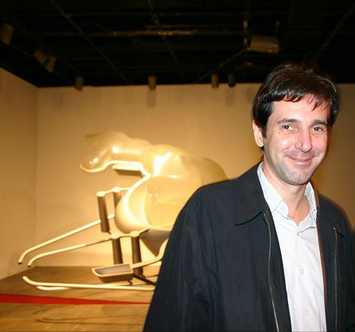
‘— Last year I went to see Peter Hook, the bass player from Joy Division/New Order, perform their debut album Unknown Pleasures at the Henry Fonda Theatre. I was with my friend Stephanie. We got tickets without thinking too much about it. As the event drew closer, it became obvious that it was terrible idea. Still, I was hopeful that Hook and his band could somehow pull it off. Maybe he knows what he’s doing and this isn’t just a way to make some quick cash now that he’s left New Order.
‘The place is packed. Old and young people, couples with kids are standing around waiting for the show to start. A transmission of knowledge. We sit at a booth and exchange trivia about Joy Division with a couple, while a documentary retracing the band’s career is projected on stage. The show finally starts and after hearing the first song, we completely lose hope. Stephanie leaves during the third song to go to our friend Heather’s Christmas party. She wants to buy a t-shirt but I convince her not to. I promise her that I’ll make her one. I think about the band’s off-grooves etchings and describe them to her. The one on Still, released after Ian Curtis’s suicide, says, “The chicken won’t stop” and “The chicken stops here.” The chicken tracks across the grooves on the opposite side would make a cool t-shirt. They reference the ending of Werner Herzog’s 1977 movie, Stroszek, where the character played by Bruno S., a street musician, leaves Berlin for the US, to escape the constant bullying his girlfriend’s ex-pimp subjects him to. After his trailer gets repossessed, and an absurd attempt to rob a bank, he ends up committing suicide. The film ends with a sequence showing a chicken dancing. Presumably this is the last movie Curtis, who was a fan of Herzog’s, saw on the BBC the night he hanged himself. All of this, and pretty much everything else, is common knowledge now, and features in the film’s Wikipedia page.
‘I walk upstairs to smoke a cigarette. I am vaguely hopeless but not angry as I gaze dreamily at Hollywood Boulevard. I think about what Joy Division meant to me then, what the sound signified and triggered. A floating atmosphere of defeat. Things that would unfold later, once I’d patiently deciphered the clues and researched the influences contained in the records. The two news stories I remember most from that time: the Tenerife Airport disaster in ’77, the deadliest accident in history and so close to Morocco. Jim Jones’s Guyana cult suicide on the cover of Paris Match in December ’78, a green-tinted black and white photo of bodies face-down on the ground. Leaders of men, made a promise for a new life.’ — Hedi El Kholti
Hedi El Kholti @ Semiotext(e)
An Interview with Hedi El Kholti
HOLD UP TO THE LIGHT
theotherhedi @ instagram
Buy ‘A Place in the Sun’
 Hedi El Kholti A Place In The Sun
Hedi El Kholti A Place In The Sun
Hesse Press
‘”A childhood game. Too many blank spaces and unsupervised hours. There was an history, with nebulous trajectories to decipher, trivial facts to memorize, a multitude of characters and a narrative that would open up a world of possibilities and teach me how to live.
‘Divide, displace, itemize, everything has to go, 20 years of accumulated magazines and this absurd desire to consume it all, to let nothing escape, and encapsulate all of it in a final embrace.”
‘Hedi El Kholti’s A PLACE IN THE SUN is composed of more than 60 collage works, selected from hundreds of pieces produced over the last 12 years. Accompanied by El Kholti’s original texts, these works have previously circulated in limited-edition, print-only ‘zine form. His images—culled from alternative cinema and art magazines, cult tracts, gay porn and slasher movies—evoke states of ecstasy, isolation, liberation and horror, often simultaneously.
‘Hedi El Kholti is a co-editor of Semiotexte, and the founder and publisher of Animal Shelter, an occasional journal of art, sex and literature.’ — Hesse Press
Excerpts





Otis MFA Graphic Design Lecture: Hedi el Kholti
Waiting for Brainard (Trailer)
Semiotext(e) at the Whitney Biennial
_________________

‘Andrew Durbin writes prose with narcoleptic tendencies, his sentences like sleepers suddenly jerking awake. In his new novel, MacArthur Park, Durbin’s protagonist Nick Fowler, a young poet who occasionally writes about art and is also working on a book, is trying to recall the details of a hookup. He knows he made out with a boy to the backdrop of a rising sun; it might have been snowing. Durbin writes, “All winter I kept thinking that it was snowing, though it was often too warm to stick or seemingly too cold to snow, and so the silver-gray clouds, like the underbellies of fish, kept their close, mindful distance, always refusing to break out of their steady overhead stream into an event. The weather did not like to make itself understood.” But Durbin does. His character’s interiors are well-lit, even during blackouts.
‘The book Fowler is writing, loosely, throughout MacArthur Park, is about weather. At the onset of the novel, he survives Hurricane Sandy while housesitting for an art collector in New York City’s West Village. The relative privilege of his circumstance becomes a smudge on his memory; he no longer trusts how people, including himself, recall disaster. When asked at a dinner party about his writing, he remembers the “Untitled book thing” folder on his computer, where he postulates that his “sense of weather had enlarged to include the turbulent atmosphere of human events, the ways in which we face or avoid crisis, the ways we skid toward crisis, helplessly, together and alone.”
‘Together and alone are jarring modes of MacArthur Park, breaking down the sometimes intimidating integration of making art and making the party. Durbin’s writing doesn’t assume the position of being above any of his peripheral characters, except maybe as a drone, scanning their expressions for “the cheerful daze of a member of a cult.” A writer should write, he doesn’t exactly argue. He seems to understand when others make a case for “not-making-art,” but he just can’t help himself from expressing himself in writing. The proliferation of his words become an argument unto themselves.’ — Thora Siemsen
Andrew Durbin’s Site
TALKING DISCO AND THE DISASTER IMAGINARY WITH ANDREW DURBIN
Stormy Weather: on Andrew Durbin’s ‘MacArthur Park’
Andrew Durbin & Lucy Ives Discuss the Poet’s Novel
Buy ‘MacArthur Park’
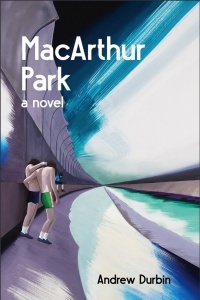 Andrew Durbin MacArthur Park
Andrew Durbin MacArthur Park
Nightboat Books
‘Andrew Durbin’s debut novel asks what it means to belong to a place, an idea, and a time, even as those things begin to slip away.
‘After Hurricane Sandy, Nick Fowler, a writer, stranded alone in a Manhattan apartment without power, begins to contemplate disaster. Months later, at an artist residency in upstate New York, Nick finds his subject in disaster itself and the communities shaped by it, where crisis animates both hope and denial, unacknowledged pasts and potential futures. As he travels to Los Angeles and London on assignment, Nick discovers that outsiders—their lives and histories disturbed by sex, loss, and bad weather—are often better understood by what they have hidden from the world than what they have revealed.’ — Nightboat Books
Excerpt
In 1853, William Money, a mystic from NewYork who claimed Jesus had cornered him in a Manhattan alley and told him to cross the West for Los Angeles, arrived in southern California to save the world. A self-proclaimed healer and scientist, Money wrote many books about the medical and scientific fields he claimed to be an expert in, including the first book about LA to be written in English. He made maps: “William Money’s Discovery of the Ocean,” which he completed at the end of his life, revealed that San Francisco—a city he deeply hated after locals rejected his faith healing practices and he was hauled out of town—sat precariously on top of a secret ocean. He moonlighted as an astronomer and a prophet of the weather. He founded the Reformed New Testament Church of the Faith of Jesus Christ and was nicknamed Bishop Money, Doctor Money, and Professor Money. He healed thousands in the city before voluntarily retreating into the desert to found a spiritual commune of octagonal buildings called The Moneyan Institute, where he later died with an image of the Virgin over his head and a skeleton etched into his footboard. In dying he was said to have placed a curse on the city for refusing to publish his map of California’s secret underground ocean and predicted that Los Angeles would meet the same fate as San Francisco and fall into the sea. Neither have yet, but Money’s prophecy sparked an imaginary of disaster that continues to destroy the city anyway: early to recent fiction, films, video games have all traded in on the moody suspicion that the land is cursed, sourcing the city’s geological, climactic, and social precarity—and the anxiety it produces—to provide images of destruction and demolition for the visual discourse of the city’s dystopian present and future.
Recast as an amoral city in the early noir of the 1920s, Angelino writers quickly scripted the destruction of LA in their forecasts for its future, notably in Homer Lea’s Valor of Ignornace (1909), a racist vision of a Japanese invasion of LA; and Myron Brinig’s Flutter of an Eyelid (1933), a novel about Christian fanatics and an earthquake that destroys the city—apocalyptic tropes that were taken up and expanded in disaster films, including War of the Worlds (1953), Earthquake (1974), Escape from LA (1996), and San Andreas (2015), a film that imagines a spectacularly violent earthquake,“The Big One,” that not only annihilates the West Coast, but much of the country. In it, the Rock, one of the stars of the film, rescues as many people as possible while Los Angeles and San Francisco are destroyed around him, the concrete, wood and steel dissolving into piles of dust before the viewers while the continental shelf transforms below into an unstoppable serial killer.
In a survey of fictional and film accounts of the annihilation of LA in the 20th century, Mike Davis enumerates the modes of its demise: by nuclear weapons (49 times), earthquakes (28), hordes/invasion (10), monsters (10), pollution (7), gangs/ terrorism (6), floods (6), plagues (6), comets/tsunami (5), cults (3), volcanoes (2), firestorms (2), drought (1), blizzard (1), devil (1), freeway (1), riot (1), fog (1), slide (1), Bermuda grass (1), global warming (1), sandstorm (1), and everything (1). In destroying the city, Hollywood ups literature’s speculative ante in additionally imagining the destruction of itself, presenting the fantasy as one of national tragedy—and cathartic fantasy (for the display of male bravery)—while covertly inviting us to imagine a world without the studio system that manufactured this work in the first place. If LA goes, Hollywood goes. Disaster films about LA (all great disaster films are about LA) are the entertainment that imagines a spectacular end to itself, a totalizing destruction of not only a place but of the medium, outsizing the U.S.’s doomsy anxiety about its future in the post-war to include one if its most popular industries.
In Myron Brinig’s Flutter of an Eyelid (1933), one of the first novels to imagine the city’s obliteration, everything goes to hell, beginning with the arrival of a woman named Angela Flower. Flower opens a church called The Ten Million Dollar Heavenly Temple, a loose disguise for the activities of Christian activist and mystic Aimee Semple McPherson, an evangelist and media personality who founded the Angelus Temple in Echo Park (its actual price tag was 1.5 million, not 10) in 1923 and who radioed to thousands her fiery and stupefying sermons. (Louis Adamic referred to her believers as “the undead.”) In Brinig’s novel, Angela finds and fucks a blond Jesus, later using him to brainwash the city.Angela invites Jesus’believers toVenice Beach to behold the miracle of him walking on water. He does so, hovering slightly over the ocean before thousands of onlookers, for a few seconds, after which he sinks below the waves and his body disappears (all of LA is structured from a series of disappearances), leading his shocked and now suicidal followers to fling themselves into the water with him, where they too drown at the moment a massive earthquake destroys the city, shaking it off into the Pacific. (William Money’s curse returns.) In reality, McPherson staged her own kidnapping on Venice Beach and was later found to be hiding out in Arizona. She returned to LA under pressure form the local press and almost immediately regained the following she’d nearly lost.Angelinos greeted her a hero. A parade in her honor drew 50,000 people. The city wasn’t convinced and took her to court for fraud. Trial coverage soured her believers and she became a laughing stock. Off the hook, she left for a new life back east, a laughing stock, though the case was dismissed.
Brinig initiated a kind of disaster literature that specified Los Angeles as a teetering platform for a city of fanatics, communalized and self-organized into delusional and profiteering cults. Coincidentally, when Brinig’s novel went to print, an earthquake struck Long Beach and the southern parts of LA, actualizing the cheap novel’s ending and seemingly assuring Money’s curse was real. Rumors spread east of the city’s destruction; the disaster imaginary had entered national consciousness. LA wasn’t safe; everyone knew it. By the 1930s, suicide rates climbed high over the national average and sat there. In his 1931 essay “The Jumping-Off Place,” Edmund Wilson ascribed the trend to the region’s communalized eccentricities.
Poetry will be made by all! Andrew Durbin
Andrew Durbin @ LUMA Foundation
The Side Dish #23 Featuring Andrew Durbin
___________________
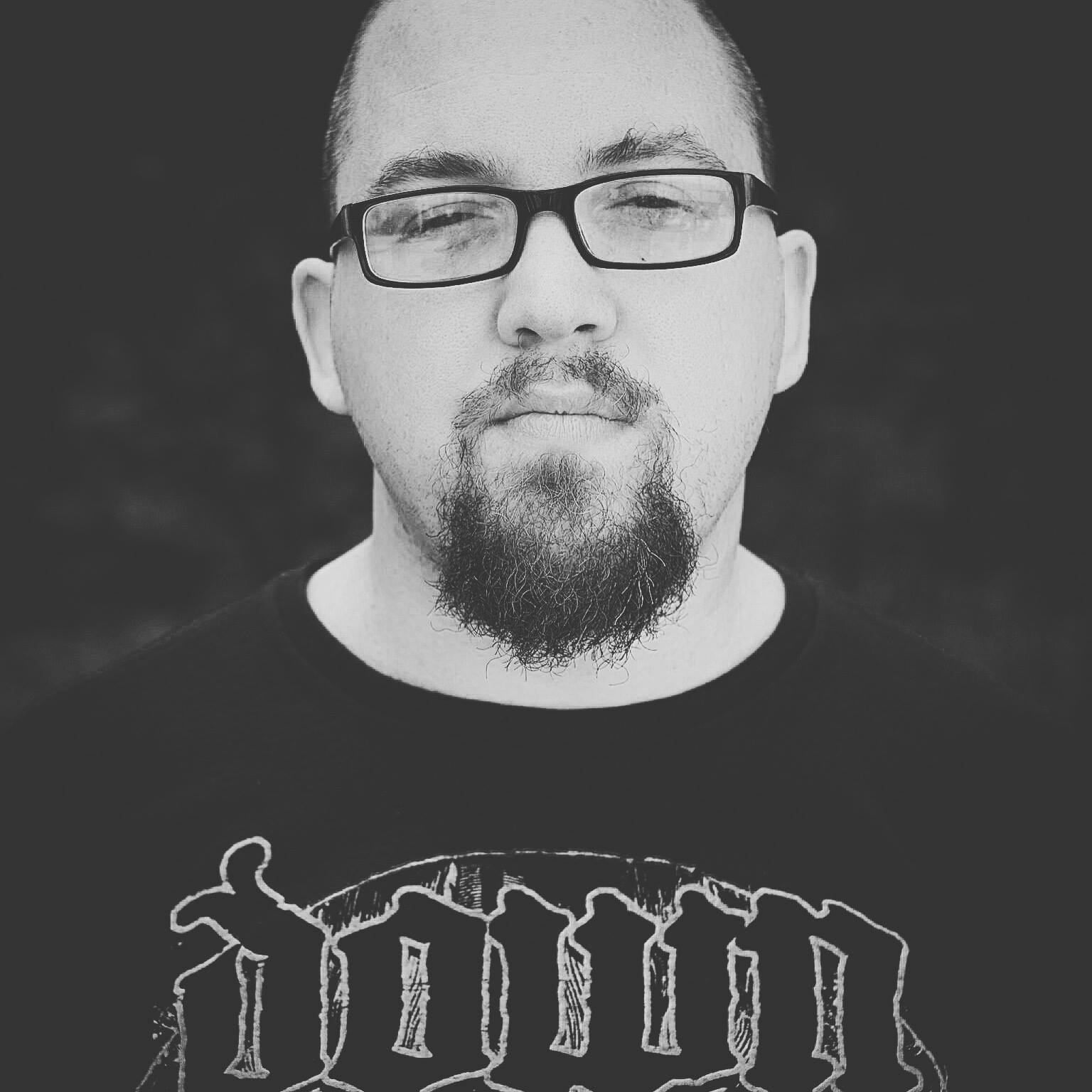
‘Barrett Busto headed down the road towards home with two buckets full of salmon in the back of his truck as noon washed over the quiet valley of Wasilla. He had been fishing since he was a boy. Now, as an old man, he owned a bait and tackle shop in Anchorage. He was the widow of a content but childless marriage, his wife now ten years dead. Busto was nearing seventy and word had somehow reached him that the neighbors, and even his customers at the shop, thought he was losing his mind. Damn them to hell, he thought. What did they know?
‘He flicked through the radio channels as he drove on; the receiver gave him nothing but fuzz. Over the dissonant static, he heard a clear and heavy sound ring out like thunder. Moments later he heard the whir of a plane overhead. When he looked up and saw the plane cutting through the sky, he identified it as belonging to a prominent local politician named Stella Peyton. Hunting wolves is a hobby of hers. The revised law stated that aerial hunters had to chase down the wolf with the plane to the point of exhaustion, before shooting it from the ground. Not Stella Peyton though. As a state employee she was granted special provisions that allowed her to shoot it from the plane. She never even had to look it in the eye.
‘Barrett Busto never saw the sense in hunting wolves. When the wolf population was at its peak a century ago and a possible threat to other wildlife as well as dogs or livestock, the practice might have been justified in some eyes. Now though, with the creature just rising up from near extinction because of such killing, what point was there? Now that the animal had been forced into small isolated populations on the part of human expansion into their territories?
‘A pelt to hang by a mantle piece.
‘A righteous extermination of some symbolic evil. Something that is primitive and heathen and ungodly.
‘Maybe Stella Peyton being a steadfast fundamentalist played into her justification of this supposed sport.’ — Douglas Payne
Douglas Payne @ Twitter
Douglas Payne @ Facebook
Douglas Payne @ Muck and Muse
‘Birdsong’, by Douglas Payne
Buy ‘Salted Rook’
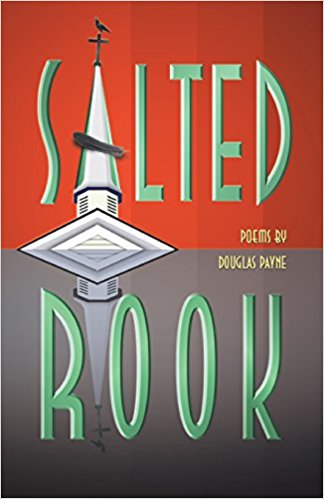 Douglas Payne Salted Rook
Douglas Payne Salted Rook
Chest-O-Drawers Press
‘Douglas Payne’s debut chapbook is a work that navigates with unflinching grace the graveled and beautiful landscapes of memory marked by apostasy, pain, intoxication, lust, and loss.
‘Douglas Payne’s poems and stories have appeared in journals and anthologies, including Muck and Muse, Shot Glass Journal, The Far East: Everything Just As It Is, A Year in Ink Vol. 5, and others. Payne is a San Diego native and an alumnus of Grossmont College’s Creative Writing Program. Salted Rook was selected in 2016 as the Grand Prize Winner of the Grossmont College “First Book” competition.’ — Chest-O-Drawers Press
Excerpt
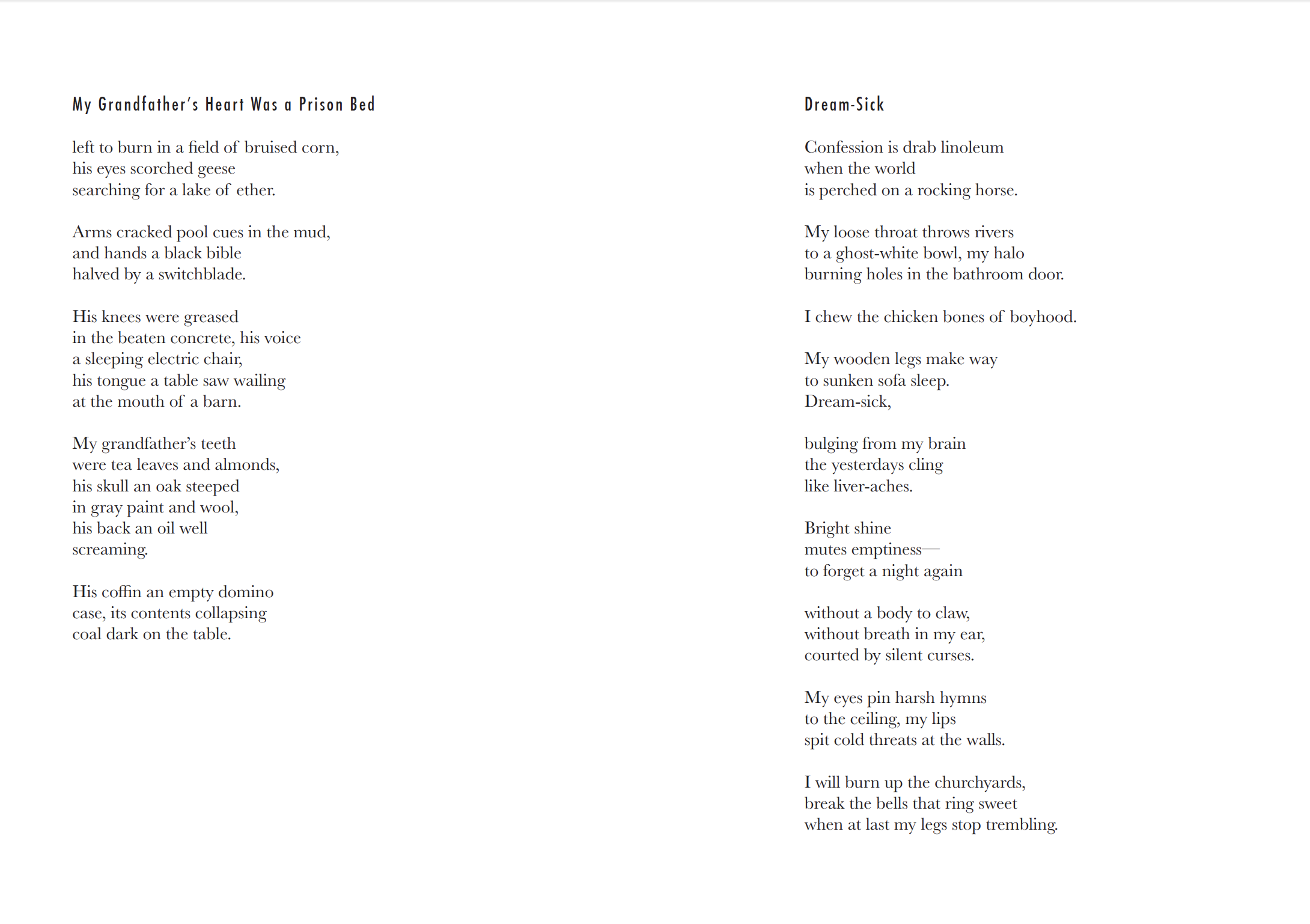
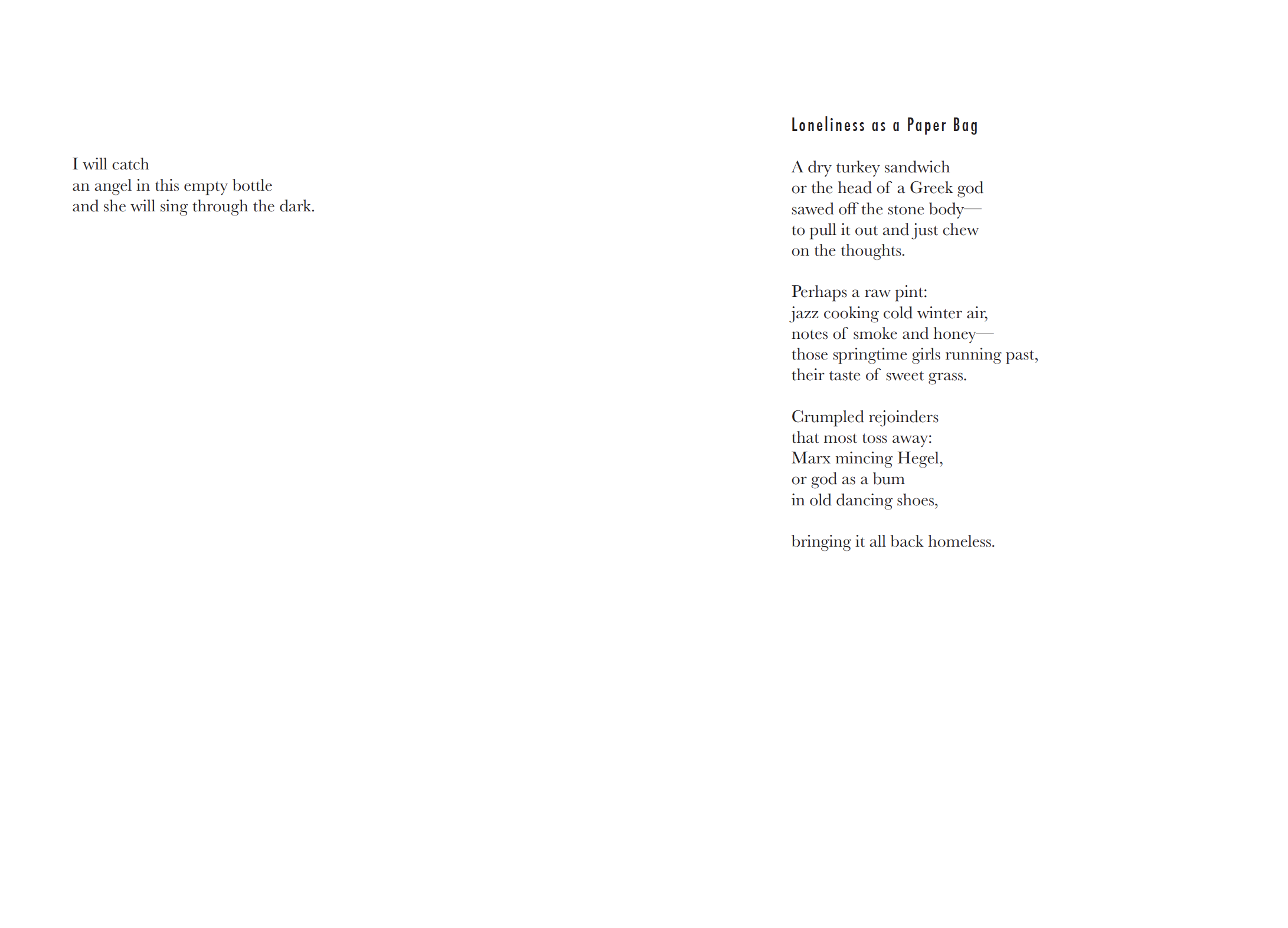
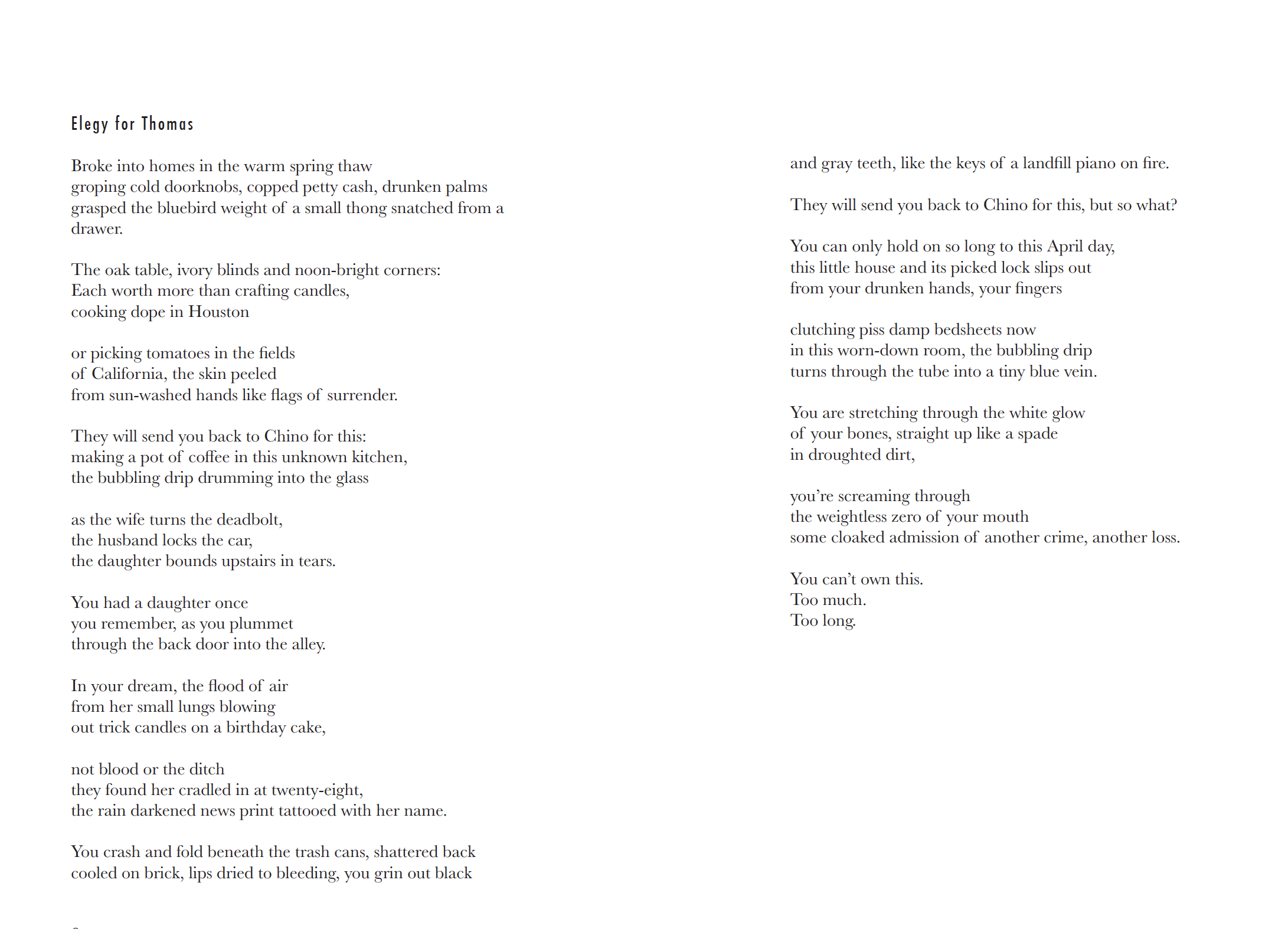


*
p.s. Hey. ** David Ehrenstein, Hi. I was very happy to do so. Oh, you and I both forgot that I restored/reposted your LaTouche post this past June. But I did restore your ‘Eyes Wide Schnitzler’ post, and it’ll be up later this week. ** Steve Erickson, Hi. It’s obviously very popular these days to decide rumors are facts. It’s a plague. I’m glad to hear everything went so well and interestingly in the meeting with your actor. I’m half-suspicious, half-open mindedly curious about the Dahmer film. ** Armando, Hi. Happy to add my happy birthday to Mr. Caprio. He used to live a block away from me in LA before he got huge and could afford a mansion, and I bumped into and talked to him a bunch of times back then. Nice fella. ** Chaim Hender, Hi! I remember Corey Heiferman, yes, hello again! What a great Wes Anderson encounter story. That’s how I imagine he would be precisely. And his enchantment ‘by slight differences in decor between miniatures’, etc. is exactly why I would so love have a long tete-a-tete with him. Thanks so much for sharing that. Wow, you’re just recently relocated. I’m guessing you knew Tel Aviv before you settled there? One of Gisele Vienne’s and my theater works, ‘Kindertotenlieder’ is going to play there next year, although I don’t think my coming along is in the budget, unfortunately. You know, I don’t remember there being many frustrations upon relocating in Paris apart from the difficulties back when I didn’t understand any French. But the joy of newly living here was considerable, and I haven’t lost that joy years later. I’ve been really productive ever since I moved here, and I think I’ve been doing my best ever work, which must have something to do with the magic and foreignness of my surroundings. So, yeah, no real issues or warnings to you that I can think of. What are you experiencing there so far? You sound happy and inspired, awesome. ** Dóra Grőber, Hi! I’m still tinkering with the film script, but I think I’ll be able to show it to Zac tomorrow maybe. I’m drafting up a rough script for the first, oh, 1/3 to 1/2 of the film. After that, there are just notes and ideas about what I think should happen. I’m really into what I’m writing. We’ll see what Zac thinks. I’m sure there’ll be a lot of revisions and things he wants to do. The concert I went to was by this French/Argentinian artist whose work I love, Dominique-Gonzalez Foerster, who’s designing the set for the future opera project I’m working on with Gisele and her and Zac. Part of her work is performative. She does these very elaborate physical makeovers to become a different person, often well known (Edgar Allan Poe, Queen Victoria, others), and completely unrecognizable as herself. For the concert, which was at Club Silencio, she became this strange 80’s style New Wave rock singer who deliberately looked like ‘Priss’ from the original Blade Runner, and she sang these very witty, parodic, deconstructive 80s New Wave songs she wrote. It was wonderful. And the guitarist in her band was the great Arto Lindsay, one of the architects of No Wave, and just a genius, master guitar player. Your day off sounds quite like just what you needed and deserved. I hope you feel refreshed today as you head back to work. How was everything? ** _Black_Acrylic, Howdy, Ben. Super that the ‘mini’ karaoke event went down gang busters. But, ack, shit, about you not getting that funding. Damn. What are your other options? I’ve never crowdfunded, and it seems like a hassle, but I guess it works, especially in a situation like yours where the needed funds won’t be too large? I don’t know. Sorry. ** Nik, Hey, man! Oh, there’s no dialogue in ‘Crowd’. It’s a non-verbal dance piece. 15 young people enter a warehouse where there’s a rave/dance party, they ‘dance’ until the rave ends, and they leave. What I did was create specific characters for each dancer and narratives for each one that causes them to interact with each other during the piece as their characters. When we were making the piece, we worked on that first until they knew their characters and narratives very well, and then Gisele choreographed the piece using the characters and storylines as a structure to build around. The characters and stories are there and visible/buried to different degrees, but everything is presented through movement. I’m a video game nut, but I’ve had to forcibly keep away from them for too long now because they swallow me, and I’m too busy right now. It sucks. What you say about your editing process makes total sense, yes. I’m totally interested to hear anything about the work that you want to share. I’m a real process junkie. I hope you have a good week too! ** Bill, Hi, pal. Oh, gosh, no sweat on the post. I’m just thrilled that you’re doing it. Thank you! I don’t know Mariana Enriquez’s work. It looks good. I’ll go look for her stories. ** Misanthrope, George, morning. Oh, well, I guess it’s technically possible that writer knows my stuff. Huh. I’ll see if I can come across that book in store here, and, if I do, I’ll at least flip through it and check the prose. Laid back weekend, nice. Mine was good. Working on the film script. Seeing pals. Concert (see: above). Hit a book fair. Ate delicious shit. A-okay. ** Keaton, Move your furniture around or something. That can weirdly help. I’m in a flowing creativity moment too. Awesome. High as a kite or thereabouts. Manly, ha ha, gotcha. I think ‘Golden Fruits’ is by Sarraute. Salut a toi! ** Sypha, A kind of horrible guy I used to know who was gay but had a girlfriend told me he got into having sex with her by imagining her breasts were a butt with two big pimples on it. Eek. I had a post about C.J. Bradbury Robinson? I don’t remember that at all. Assuming you’re right, it must have been a post I made as a way to start investigating his stuff or something. I don’t think I’ve read him, or else I’m blanking out. Huh. I’ll check. Thanks, James. ** Okay. Should you need something new to read, I recommend those books up above as possibilities. See you tomorrow.
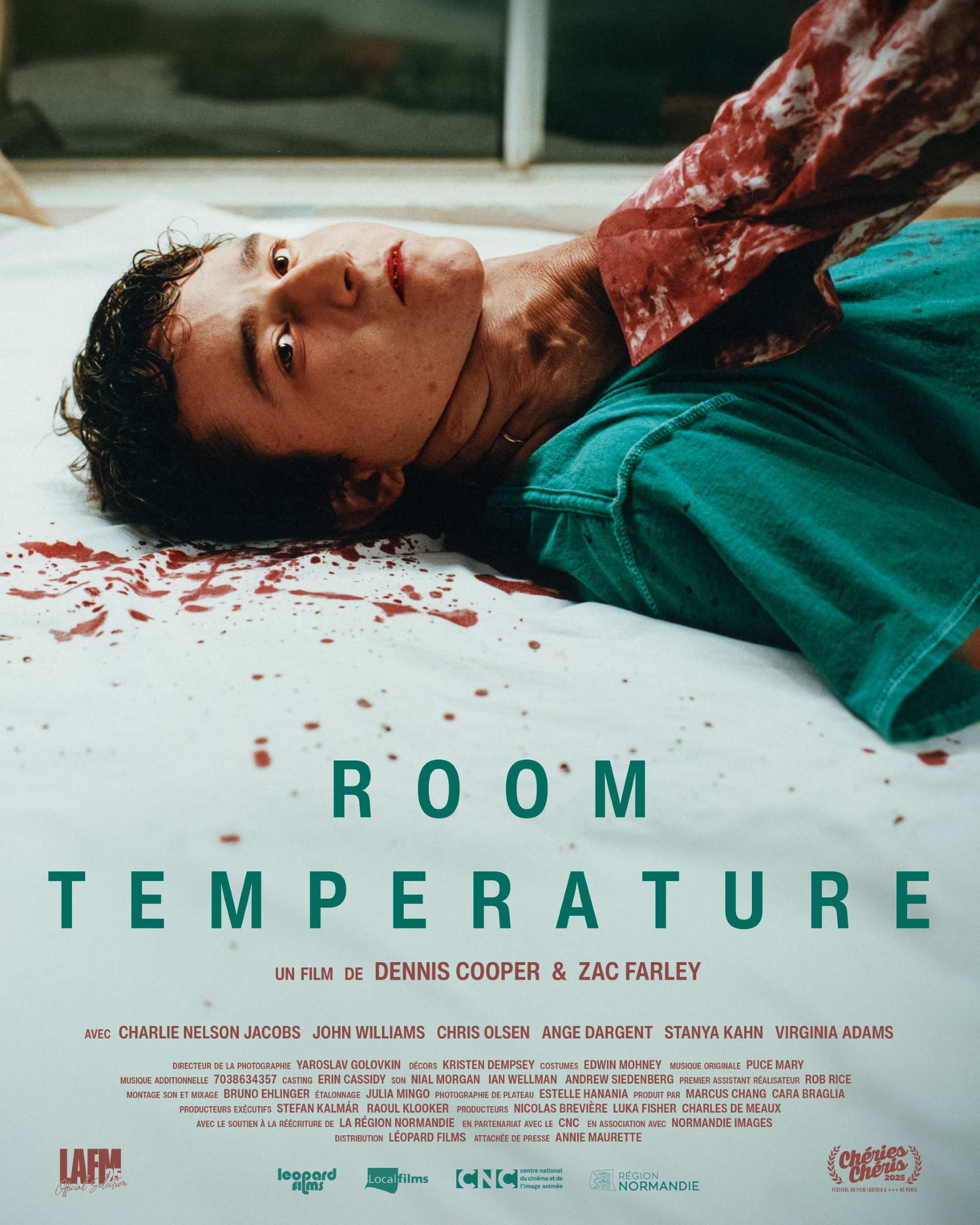



 Now available in North America
Now available in North America 
Dennis,
Thanks so much! Someone else’s poem is after my picture though. Haha.
That “Waiting For Brainard” video is baffling.
No one came to my interview/event yesterday save for Walter Rueben and his husband Robert. It was recorded and archived so I’ll provide a link when it becomes available.
I did a Facebook post about MY FRIEND DAHMER last night that you might have seen by now. In short, it’s excellent, and far more genuinely serious and less exploitative than the 2002 film DAHMER, which starred Jeremy Renner in the period of his life when he was an active murderer. Former Disney star/tween pop singer Ross Lynch’s performance is excellent – he always seems to be in a distant daze, even before Dahmer started getting drunk at 9 AM – although taking roles like this has become kind of a cliche for former child/teen stars who want to announce they’re now adults. There’s a sense that Dahmer’s life might have turned out differently if the social landscape he navigated as a teen didn’t consist of a mix of cruelty and apathy, without ever coming out and saying ” he became a serial killer because his supposed friends made fun of him.” This has a lot of similarities to the horror film SUPER DARK TIMES, which came out in October, and films like THE RIVER’S EDGE and OVER THE EDGE. Also, one of the teens in the film somehow got a copy of Rocket From the Tombs’ demo tape, decades before it would be commercially released.
I saw a performance of DJ Shadow and Run the Jewels doing “Nobody Speak” on the Tonight Show in summer 2016 on YouTube last night. They managed to rewrite the lyrics so that it contains no profanity and even got rid of references to guns. El-P’s line about walking into a court with an erection was changed to “I walk into a courtroom, I stand erect.” However, they were allowed to keep drug references intact: Killer Mike still rapped about “rolling dope in a doobie.” Knowing the original version, this seemed really lame. I remember watching edited versions of hip-hop videos on MTV and I have now seen the unedited versions of some of them on YouTube. In some cases, I am amazed that it was possible to edit the songs for radio/video play at all, and while I have noticed the few times I’ve recently watched the BET Jams cable channel that they now seem OK with weed references, I recall seeing videos where it seemed like half the lyrics were cut out.
Right now I’m almost halfway through Don DeLillo’s “The Names.” This is only the second book of his that I’ve read (the first being “Libra”). I hope it picks up a bit, so far the first half was been pretty meandering. In some ways his prose style reminds me a bit of Denis Johnson’s, just without the heart.
Dennis, yeah, I remember the Bradbury Robinson day because I wrote his name down (along with the other two featured writers) on a scrap of paper. Today (after a bit of searching) I found that old scrap of paper, and saw that the other two writers explored that day were Tony Duvert and Casimir Dukahz). This would have been around the spring of 2014, as on the other side of the scrap of paper I saw a tentative reading schedule I had drafted that year, for the months of May until December. H’mm, maybe this would be a good potential day to restore?
I love it when you recommend new books/authors on your blog. Some of my best reading moments (as a reader) has come from your world. Thanks for today. I’m very excited to get, read, and look at Hedi’s new book.
Good Morning or Evening or whatever it is. Hope you are well and….
Ish and I have been talking over this last weekend of Yvonne’s piece and wondered if you would like to by skyped into any part of the day of December 2, when we are doing the THEM auditions. Maybe even just to say hello or see the pictures of potential candidates. We just thought it might be fun and something you’d want to do, if you have the inclination and time. We could at least say hi. What do you think?
The worst sexual experience of my life was with a member of the NYC cinephile scene (who is a fan of your writing as well.) He did things to me that I asked him not to, and didn’t stop till I said no loudly and repeatedly. I don’t consider this outright abuse, because he did ultimately stop short of forcing himself on me when I kept saying no, but I know that if I went on social media right now and described exactly what happened, people would tell me that’s what it was. I am suspicious of my own and America’s tendencies towards oversharing, and I don’t want to discuss this in any forum more public than your blog, but I definitely want to talk about this with my psychiatrist Wednesday.
Hey!
I’m just dropping in to say thank you for the recommended books! I’m pretty much braindead at the moment, I’m always so tired by the time I get home.
I’ll write a normal reply to your previous letter tomorrow when I can actually compose coherent sentences, haha.
I hope you had a lovely day, Dennis!
Ooh thank you for the recommendations. I like the look of the Hedi El Kholti book, and will see if there’s any stocks left. I’ll defo take on board his Peter Hook views, it’s so sad the way PH has cut himself adrift of the other New Order members, sigh.
@ DC, thanks for your crowdfunding suggestion, which seems eminently feasible. Wednesday I’m off with Alex to see Luke Fowler’s new film Electro Pythagorus so we’ll get chance to discuss it then.
It’s encouraging and delightful to here that Paris still brings you joy. I barely knew Tel Aviv at all before deciding to move here and take the dole you get as a new immigrant with Jewish ancestry. I was in the country only once before on a family vacation half a lifetime ago at age 14. Have you ever visited?
I’m in a residential program for new immigrants (overwhelmingly Russian) with intensive Hebrew classes. The living situation feels like freshman year of college and the classroom feels like fifth grade. I studied Hebrew for a year before coming here so I have a good foundation.
In my other life that I don’t tell my dorm mates about, I go off on adventures in the bohemian neighborhoods and speak only Hebrew. The people and places I’m drawn to have a refracted quality about them. I think this stems both from, on the one hand, the newness and language barrier, and on the other, the cloudy romantic sense of what I was running away from in USA and dreaming of finding here. It’s been a delightful surprise that this warped perception has somehow instantly made me more comfortable in my skin living in the moment.
I agree with David that “Waiting for Brainard” is baffling to say the least. I used to think transposing Rohmer into Mumblecore was the kind of art I wanted to make (nothing came of it), so it was a trip to see it done so well.
Dennis! Four more books from the Big Dawg! Unfortunately, I can’t see the last writer’s pages. They’re too tiny, even with my zoom on.
You sound like you had a nice weekend. I’m trying to go to bed early tonight but probably will hit the hay around the usual time of 10:30 or so. Ugh. I need more sleep!
Oh, it’s not the prose -or style- that’s similar to yours at all. Aciman’s stuff is pretty straightforward narrative. However, it’s the themes and that one particular scene where the characters are watching each other shit and then looking in the bowl to bring themselves closer together. The difference is that he’s sincere and earnest about it, whereas your characters tend to -while hoping they’ll find that sincerity and earnestness- not find the things they’re looking for in their more extreme behavior. They’d be more like, “Okay, it was just shit. Didn’t find anything I was looking for there. Next…”
Unless I’m reading both of you wrong.
He’s all into desire and objectification and obsession but seems to validate those things, as if they are the end all and be all for his characters. They find love in each others’ bodies. Your characters usually are looking for something much more, and while they find things in bodies and objects of desire, they usually end up frustrated because they’re looking for something more or those things just aren’t enough. Does that make sense?
Maybe some of this goes back to our dialogue discussion we just had. I find your characters finding much more in their dialogue than in their more extreme actions. Quite the opposite with Aciman…words aren’t enough, it’s all about the bodies in the end.
There are no scenes involving shit in the movie!
“Oh yeah, well I know a director.” hehe hope things
are good in filmland. I’m good just need to nail my
ass to this chair. When I think back at the “bi-sexuals”
of my teen years, it’s scary to think of how in danger
my little butt was. Duh, found Hemingways? grave at Passy
by using a Duras book, followed the thieves jumping
the roofs of the sepulchures. New books! I totally forget I still have
like 3 new ghost books to read. PS. having an awful time sleeping, dehydration,
urgency, horrible ass nightmares nightly, and now theyre spilling over into my house. Should make for good horror writing eh?
What are your thoughts on these things?
(not those, sir!) jk
1. Description/ description of objects, how much is too
much?
2. Characterization, what the fuck does that even mean?
3. Blanchot’s Literature from Behind/With?
I was about to put Renee Gladman on my to-read list; then I noticed the lack of paragraph breaks. Is that typical of her books? Sigh.
Was at Mike Kitchell’s reading last weekend, and picked up the new edition of Hour of the Wolf. Very nice, and very different design and feel from the earlier edition.
Bill